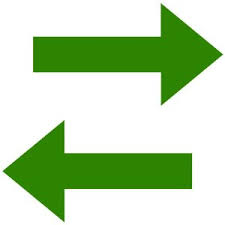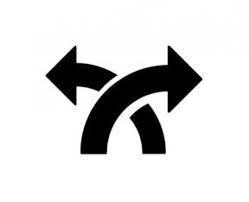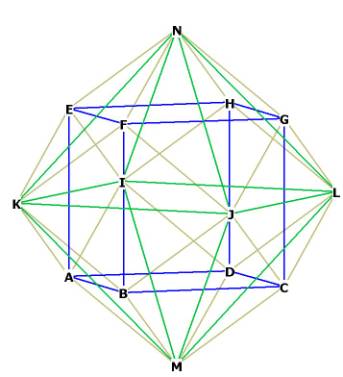|
(2019
midterm assignment) Model Midterm answers 2019 (Index) Essay 1: Compare, contrast, and evaluate Narratives of the Future |
 |
Zachariah Gandin
3/28/2019
The Patterns of the Future
I was not sure at first as to how to
organize my thoughts or construct what I have learned thus far in Literature of
the Future until I read Christa Van Allen’s pre-midterm essay from 2016,
“Telling Tales of Tomorrow” which inspired me with the confidence to explain my
knowledge of Narratives of the Future through my own personal lens instead of
trying to dismantle the entirety of future narratives. When I signed up for
Literature of the Future, I anticipated that we would sort of get an idea of how
people imagined the future would be but I did not realize the true scope of what
I would learn. The classes that we have had have mainly focused on Revelations
and other books from the Bible that
reference Creation and the Apocalypse,
Parable of the Sower, and The Time
Machine as well some others such “Stones Lives,” “Garden of Forking Paths,”
and “Better Be Ready ‘bout Half Past Eight.” From those stories and the class
discussions surrounding them, I have already gleaned a lot of new insight into
what I believe Narratives of the Future are all about. Namely, I realized that
the point of the course is to delve deeply into how the future has been
perceived by humans throughout the ages, spanning from ancient and biblical
times all the way to the present day.
From my new perspective and angle on how I viewed
Literature of the Future, I believe that Narratives of the Future are all about
the way in which humanity has imagined the future to be or how they wished it
could be in the future. There appear to be three distinct ways or frameworks in
which how we imagine the future or predict the future can be categorized and
organized: the Creation/Apocalypse way, the Evolution way, or the Alternative
Futures way. The first way we explored as was mentioned above, was by reading
the book of Revelations along with other chapters about prophesy in the
Bible. These prophesies are first
described in the book of Daniel by Daniel through the recounting of his dreams
and realizing that they document or prophesize the signs that will appear when
the “end-times” are nigh (Dan. 7.1-12.13). Jesus then briefly mentions the end
times when asked by his disciples in the book of Matthew and he gives them a
description or prophesy that closely resembles what Daniel described and goes as
far as giving advice on what to do in order to survive during the Apocalypse
(Mat. 24.1-51). Finally, in the book of Revelations, there are full-length
descriptions of the seven angels coming down and bringing about the Apocalypse
and following (although with much greater detail) the same signs that were first
described by others in the Bible as
well as Daniel and Jesus (Rev. 1.1-22.21). I found that these books and the
Bible itself encapsulate perfectly
that the meat and bones of what the Creation/Apocalypse way of seeing the future
is all about is to have one complete story that accurately depicts both the
creation of the world and the end of it that also lends to the idea that there
is a divinity to humans and the world and there is a well formed plan that we
can all trust in.
There are other stories in addition to the
Bible, that fall into the
Creation/Apocalypse category as well, such as
Parable of the Sower by Octavia
Butler. In it, we have Lauren, the main character, as a savior type who makes a
prediction or “prophesizes” about how everything will end and fall apart, and it
is only through the salvation that she offers that anyone can be saved, much
like Jesus, Daniel, and John in the Bible
do. However, Parable of the Sower
transitioned our class into the realm of the Evolution way of looking at the
future as well since it contains both. Lauren appears to have a mutation that
she shares with what looks like a slightly different or new breed of human that
have “hyperempathy.” This allows (or forces) Lauren and a few others to feel the
pain of those around them and indicates some direction of evolution that would
paint the picture of an extremely empathic and empathetic species of humans. A
few characters even allude to what it would look like if no one could hurt
anyone else without hurting themselves, that perhaps that would be a better
world. “Stones Lives” by Paul Di Filippo, also exemplifies an Evolution
viewpoint of the future as it is set in a more advanced future with people
augmented by cybernetic advancements and appears to have progressed as a
society. These stories depict to me that the Evolution way of seeing the future
is all about some sort of scientific progress or at least how we as humans
perceive that progress to look, i.e. a mutation that makes you more empathetic
or actual more advanced technology.
However, much like
Parable of the Sower, “Stone Lives” is contained within another viewpoint of
the future, that of the most recent way we have learned about in class, the
Alternative future. The main character, Stone, discovers in his research of the
past how his current world came to be and it seems to be an alternative version
of how our world went in which our nations devolved into different territory
controlled by different corporations instead of how our nations are now in real
life (178-199). Another good example of Alternative futures is presented in
The Time Machine by H.G. Wells when
the Time Traveler travels into the future and sees what becomes of our world and
humanity. In a fusion of Evolution and an Alternative Future, he sees that
humanity in this particular timeline continued to evolve into a perfected form
in which there was no strife and consequently no growth and without that,
humanity began to devolve into animals or simpletons. “Garden of Forking Paths”
by Jorge Luis Borges, does an excellent job of explaining this concept of
alternative futures or timelines in which the short story describes the work of
the protagonist Yu Tsun’s ancestor, Ts'ui Pên. The work, a novel that acts as a
labyrinth with contradictory chapters in which different events take place
because of different choices from one chapter to the next, is used to create the
image that the theme of Alterative Future is a network of different events
happening because of different choices and different directions in the
timelines, all stacked one on top of the other, all technically happening
simultaneously.
There was another side of Alternative Futures as
described by “Better Be Ready ‘bout Half Past Eight” by Alison Baker, in which
the alternate future is described as one in which sexuality is more fluid as is
exemplified by the main character and his best friend than what I presume the
present stance on these issues was when Bakker wrote this story. Her prediction
or image of the future is very much a reality in our current present, it must
have been viewed as an alternative future in much the same way
The Time Machine’s was (unless of
course we all end up devolving into the Eloi) when it was first written but in a
far more subtle way that actually came true. However, the alternate future
‘experience’ is presented in a second light and also an evolution way in Baker’s
story, in the way that the main character, Byron, realizes that the world is
very different from the world he has been living in: a world where the
advancement of technology has brought to life and ‘resolved’ the struggles of
people like Zach who were born a male but felt they were really a female. This
presents the idea that an Alternative Future could be described in a more
psychological fashion where an individual character suddenly realized they were
living in an alternative future, different from what they thought they knew.
After reading and discussing all of these stories in class, I realized that
Alternative Futures were the visions of the future where our timeline has been
altered or deviates in some way from what we know to be reality and creates a
whole new world, some subtly different and others vastly that causes the readers
to think, “What if?”
Ultimately, it is through these three main categories of
future narratives that we are given a unique insight into the patterns into
which humanity faces and conceptualizes the future and the unknown. Indeed, as
explored above, many of the narratives we have read can be interpreted into at
least more than one type, if not all, such as
Parable of the Sower being a Creation/Apocalypse, Evolution and alternative
future text. Timothy Morrow makes an important point in his pre midterm
assignment “Apocalypse Near: Analyzing the Narrative of Decline in Science
Fiction” that I agree with and states that there is in fact an underlying theme
of decline masked behind a shallow perception of progress contained within all
of the different Narratives of the Future that they seem to share in common.
Every future story we have read in class thus far appears to describe this
decline or be in response to this decline of humanity. Additionally, in many of
these stories such as
Parable of the Sower and “Stone
Lives” both of the main characters are uniquely gifted with being the only one
or one of few who can both see this decline and also (hopefully) have the
insight to either stop it or salvage what they can from it. However, in addition
to this common theme of decline there is also a common them of starting anew or
something after that decline. These narratives all seem to be in response to
some identified “great decline” in which the author either presents their story
as a warning to make the readers aware or also presents a solution.
 |
 |
 |
